2023 N6A Houston Natural Leather Helmet
$750.00 – $1,200.00Price range: $750.00 through $1,200.00
Specifications
-
Shell Material: Handcrafted from 100% top-grain steer hide, impregnated with a natural resin system, and sealed with a high-luster finish for durability and minimal maintenance.
Compliance: Meets NFPA 1971:2018 for structural firefighting and OSHA 1910.156 standards.
-
Sizing: Available in two sizes:
-
Medium: 6 3/8″ to 7 1/2″
-
Large: 7 5/8″ to 8 1/2″
Front Holder: Features a 6-inch carved brass eagle holder, with options for beaver or dragon designs.
-
-
Eye Protection: Equipped with a 4-inch Tuffshield or ESS goggles, both meeting ANSI/ISEA Z87.1 and NFPA 1971 impact standards.
-
Chinstrap: Soft black Nomex chinstrap with a quick-release buckle and postman slide for easy adjustment.
-
Trim: Lime/Yellow Reflexite Tetrahedron retro-reflective trim for visibility.
-
Impact Cap: Engineered for advanced thermal, impact, and penetration protection.
-
Earlap: Full-cut Nomex or PBI/Kevlar® earlap with a flame-resistant black flannel inner layer, removable and washable.
-
Warranty: Comes with a 10-year warranty against defects in materials and workmanship.
Fire Leather Helmet
The Fire Leather Helmet is a symbol of durability, safety, and tradition in firefighting gear. Crafted from high-quality, heat-resistant leather, this helmet offers superior protection against extreme temperatures, falling debris, and other hazards encountered on the fireground. Its robust construction ensures longevity while maintaining the classic firefighter aesthetic.
Key Features of Leather Fire Helmets
1. Durable Leather Construction
Crafted from thick, treated leather, these helmets offer exceptional durability and flame resistance. The leather’s natural properties provide a balance between protection and comfort, making them a preferred choice for many firefighters.
2. Distinctive Design Elements
-
Elongated Rear Brim (Duckbill/Beavertail): This feature helps deflect falling debris and prevents water from running down the firefighter’s back.
-
Frontpiece: Often adorned with a brass eagle or beaver, this ornament secures the helmet shield and adds a touch of tradition
3. Lightweight Options
Modern iterations, like the Phenix TL-2, are among the lightest NFPA-compliant leather helmets available. They combine ergonomic design with traditional aesthetics, ensuring comfort during prolonged use.
4. Customizable Shields
Firefighters can personalize their helmets with custom shields, displaying department names, numbers, or unique emblems. These shields are crafted from high-quality materials and are resistant to heat and flame.
5. Compliance with Safety Standards
Many leather helmets, such as the Phenix TL-2, meet current OSHA and NFPA 1971 standards, ensuring they provide the necessary protection during firefighting operations.
6. Replaceable Interior Components
Modern leather helmets feature removable and washable components like brow pads, liners, ear flaps, and Nomex chin straps. This design allows for proper decontamination and maintenance, adhering to cancer prevention directives for firefighters.
Why Choose a Fire Leather Helmet?
Fire leather helmets, often called “leatherheads,” are more than just traditional firefighting gear—they combine heritage, comfort, and protection in a single, reliable helmet. Here’s why firefighters choose them:
1. Time-Tested Durability
Leather helmets have been used for over a century, proving their toughness in real firefighting situations. Made from thick, treated leather, they are naturally resistant to heat, flames, and impact, offering reliable protection in critical situations.
2. Superior Comfort
Unlike some heavier modern helmets, leather helmets are lightweight and ergonomically designed. They reduce strain during long shifts while providing a snug and comfortable fit.
3. Customizable Design
Leather helmets allow firefighters to personalize their gear. Custom shields, department markings, and decals not only identify the wearer but also reflect pride and tradition within the firefighting community.
4. Protective Features
Modern leather helmets often include:
-
Replaceable liners and brow pads for hygiene and comfort.
-
Nomex chin straps for secure fit.
-
Elongated rear brim to deflect water and debris.
These features combine historical craftsmanship with modern safety standards.
5. Compliance with Safety Standards
Many leather helmets meet NFPA 1971 and OSHA regulations, ensuring they provide certified protection during firefighting operations.
6. Symbol of Tradition
Leather helmets are iconic in firefighting culture. Choosing one signals respect for the heritage and values of the fire service, connecting today’s firefighters to generations of professionals before them.
Care and Maintenance of Fire Leather Helmets
Leather fire helmets are durable and reliable, but proper care is essential to maintain their protective qualities and extend their lifespan. Follow these guidelines to keep your helmet in top condition:
1. Regular Cleaning
-
Wipe down the leather exterior with a soft, damp cloth to remove dirt, soot, and debris.
-
Use mild soap if necessary, but avoid harsh chemicals that can damage the leather’s protective finish.
-
Allow the helmet to air dry naturally—never use direct heat sources like radiators or hair dryers.
2. Conditioning the Leather
-
Apply a high-quality leather conditioner periodically to keep the leather supple and prevent cracking.
-
Avoid over-saturating; a thin, even layer is sufficient.
3. Interior Maintenance
-
Remove and clean liners, brow pads, and ear flaps according to manufacturer instructions.
-
Wash removable components with mild soap and water, and ensure they are completely dry before reassembling.
4. Inspect for Damage
-
Regularly check for cracks, loose rivets, or worn-out straps.
-
Replace any damaged parts immediately to maintain NFPA compliance and personal safety.
5. Proper Storage
-
Store your helmet in a cool, dry place away from direct sunlight or extreme heat.
-
Keep it away from chemicals, oils, or solvents that can degrade the leather.
-
Use a helmet bag or protective cover to prevent scratches and dust accumulation.
6. Avoid Excessive Water Exposure
-
Leather is naturally water-resistant but not waterproof.
-
Dry the helmet promptly if it becomes wet, and recondition the leather afterward to restore its protective qualities.
Frequently Asked Questions (FAQ) – Fire Leather Helmet
1. What is a fire leather helmet?
A fire leather helmet, often called a “leatherhead,” is traditional firefighter headgear made from durable, treated leather. It provides protection from heat, debris, and water while maintaining a lightweight, comfortable fit.
2. Are leather helmets still compliant with safety standards?
Yes. Many modern leather helmets meet NFPA 1971 and OSHA standards, ensuring they offer certified protection for firefighting operations.
3. How do I clean my leather fire helmet?
Wipe the helmet with a soft, damp cloth to remove dirt and soot. Use mild soap if needed, avoid harsh chemicals, and let it air dry naturally. Regular conditioning helps keep the leather supple and crack-free.
4. Can I customize my leather helmet?
Absolutely. Leather helmets allow for custom shields, department insignias, and personal markings, making them both functional and symbolic of your fire department’s tradition.
5. How long does a leather fire helmet last?
With proper care and maintenance, a leather helmet can last decades. Regular cleaning, conditioning, and inspection of liners, straps, and rivets ensure long-term durability.
6. What makes leather helmets different from modern composite helmets?
Leather helmets are lightweight, comfortable, and steeped in firefighting tradition. While composite helmets may offer higher impact resistance, leather helmets combine protection, breathability, and historical value.
7. Can I replace parts of my leather helmet?
Yes. Modern leather helmets often have replaceable liners, brow pads, ear flaps, and chin straps, making maintenance and decontamination easier.
8. Why do some firefighters still choose leather helmets?
Leather helmets are a symbol of firefighting heritage, offering durability, comfort, and a customizable design. Many firefighters appreciate the balance of tradition and functionality that leather helmets provide.
| Options | Band New Medium size, Brand New Large size, Refurbished Medium size, Refurbished Large size |
|---|
Be the first to review “2023 N6A Houston Natural Leather Helmet” Cancel reply
Related products
N5A Leather Helmet
N5A Leather Helmet
Natural Leather Fire Helmet
Natural Leather Fire Helmet
N5A Leather Helmet
Natural Leather Fire Helmet
Natural Leather Fire Helmet
Firefighter Radio Strap

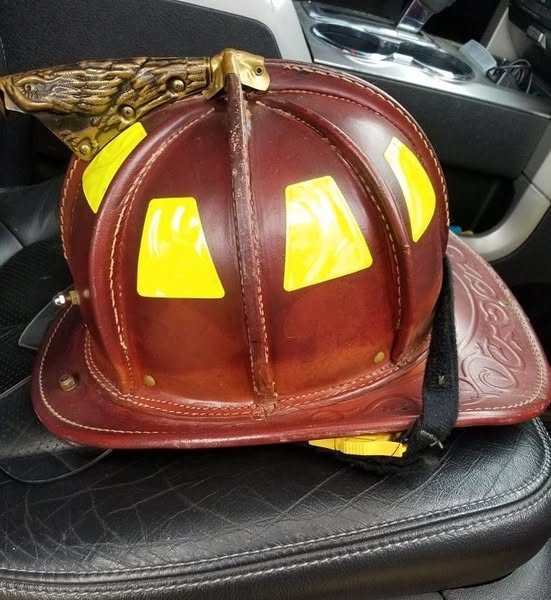
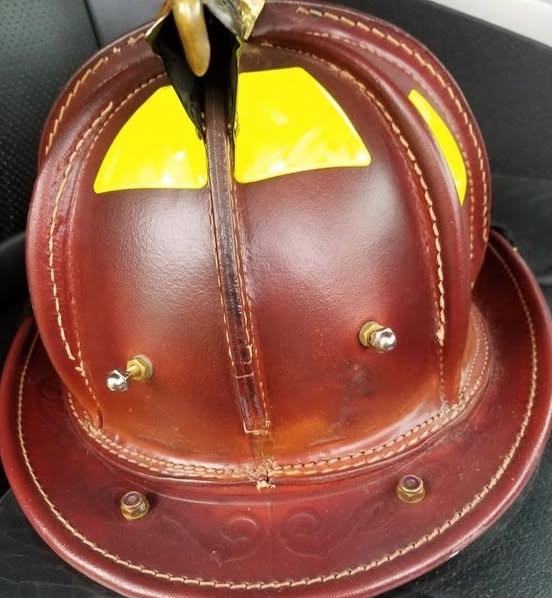
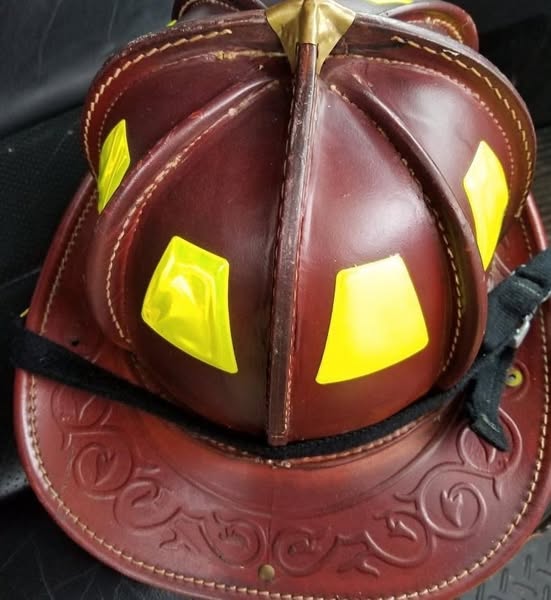
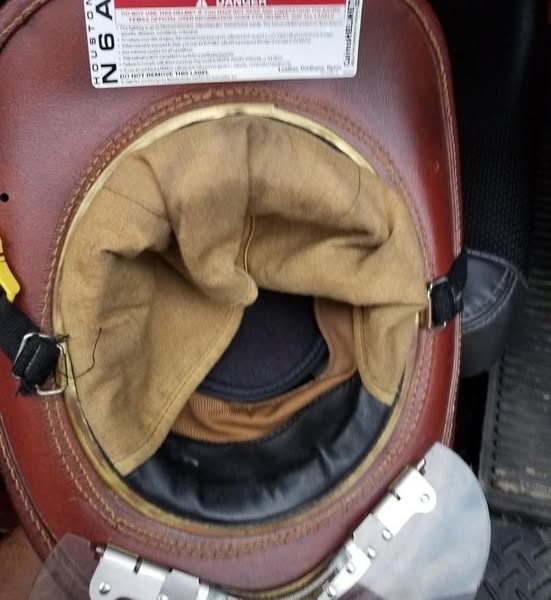

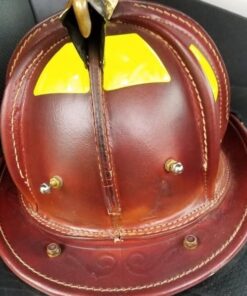
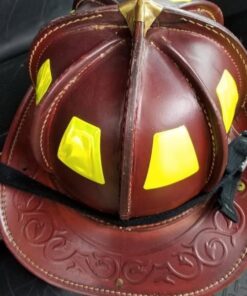
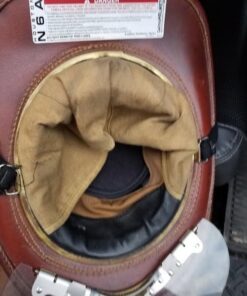
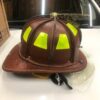
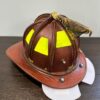





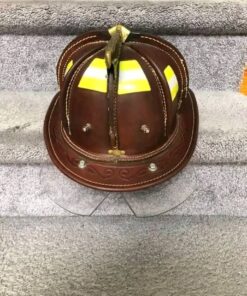
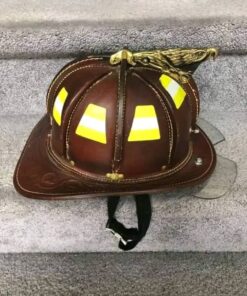

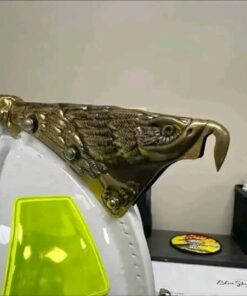



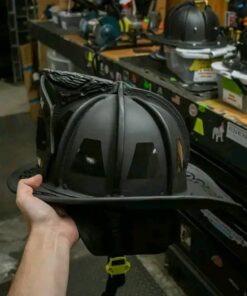
Reviews
There are no reviews yet.